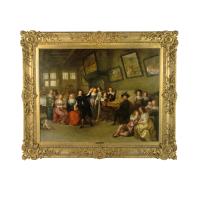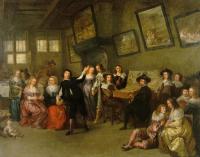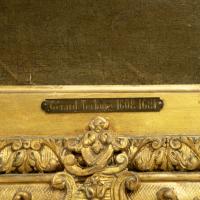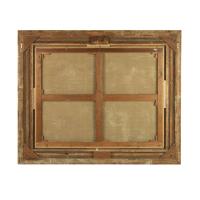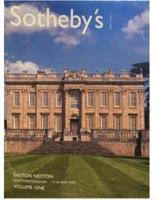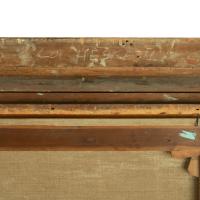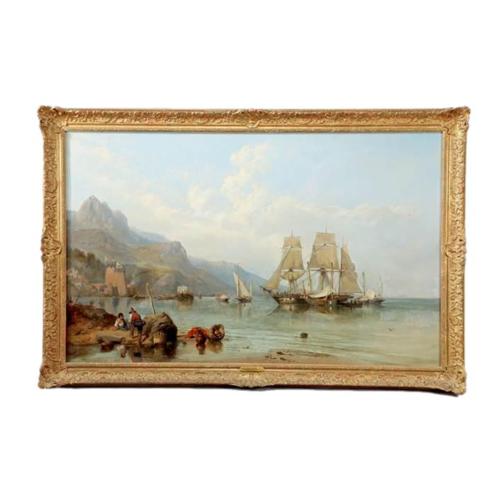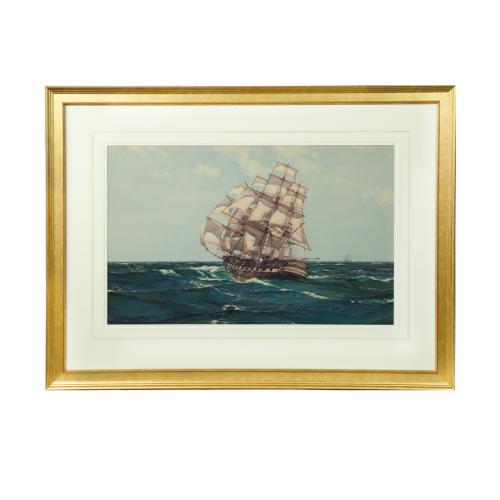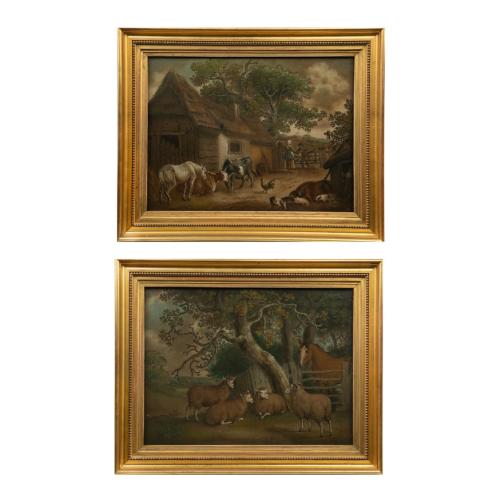
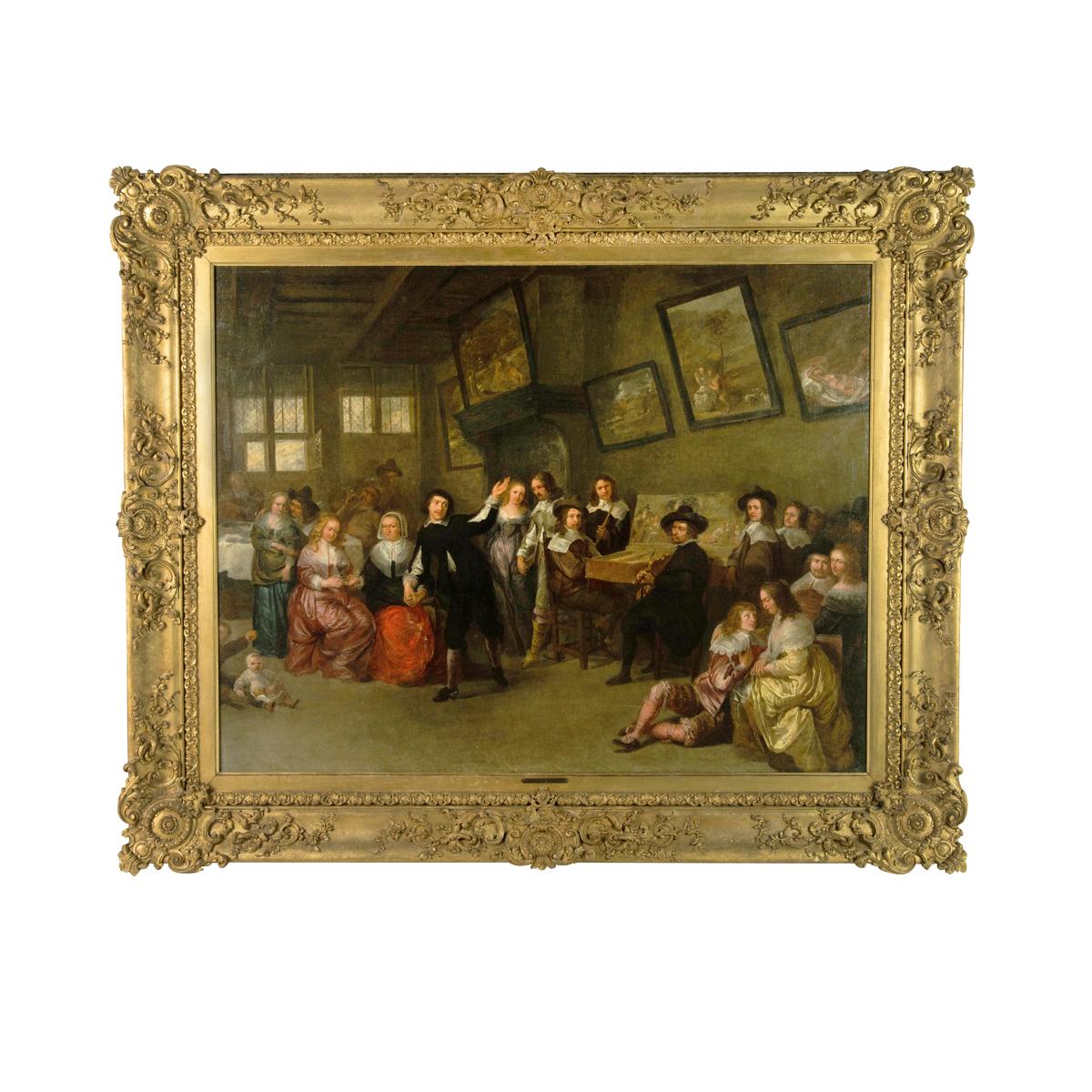
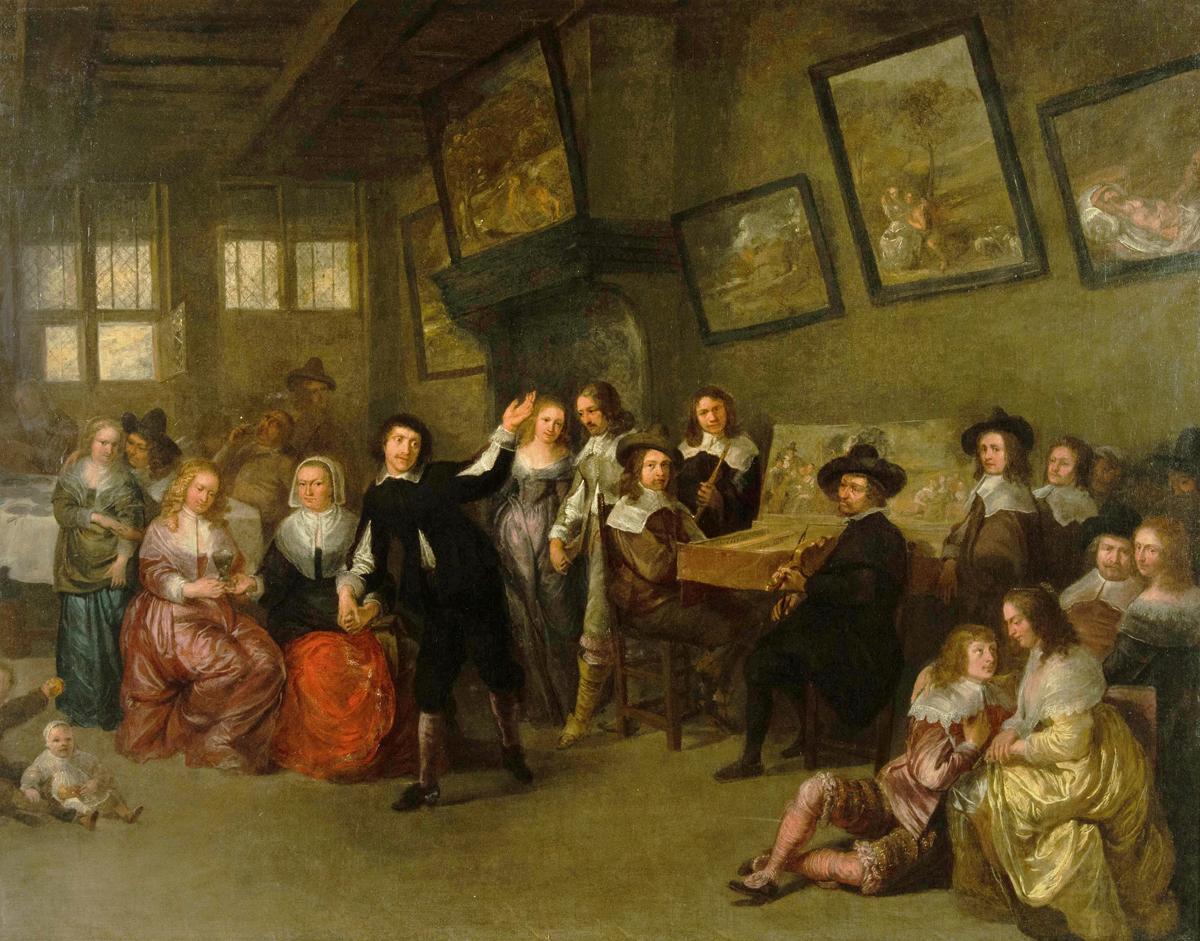
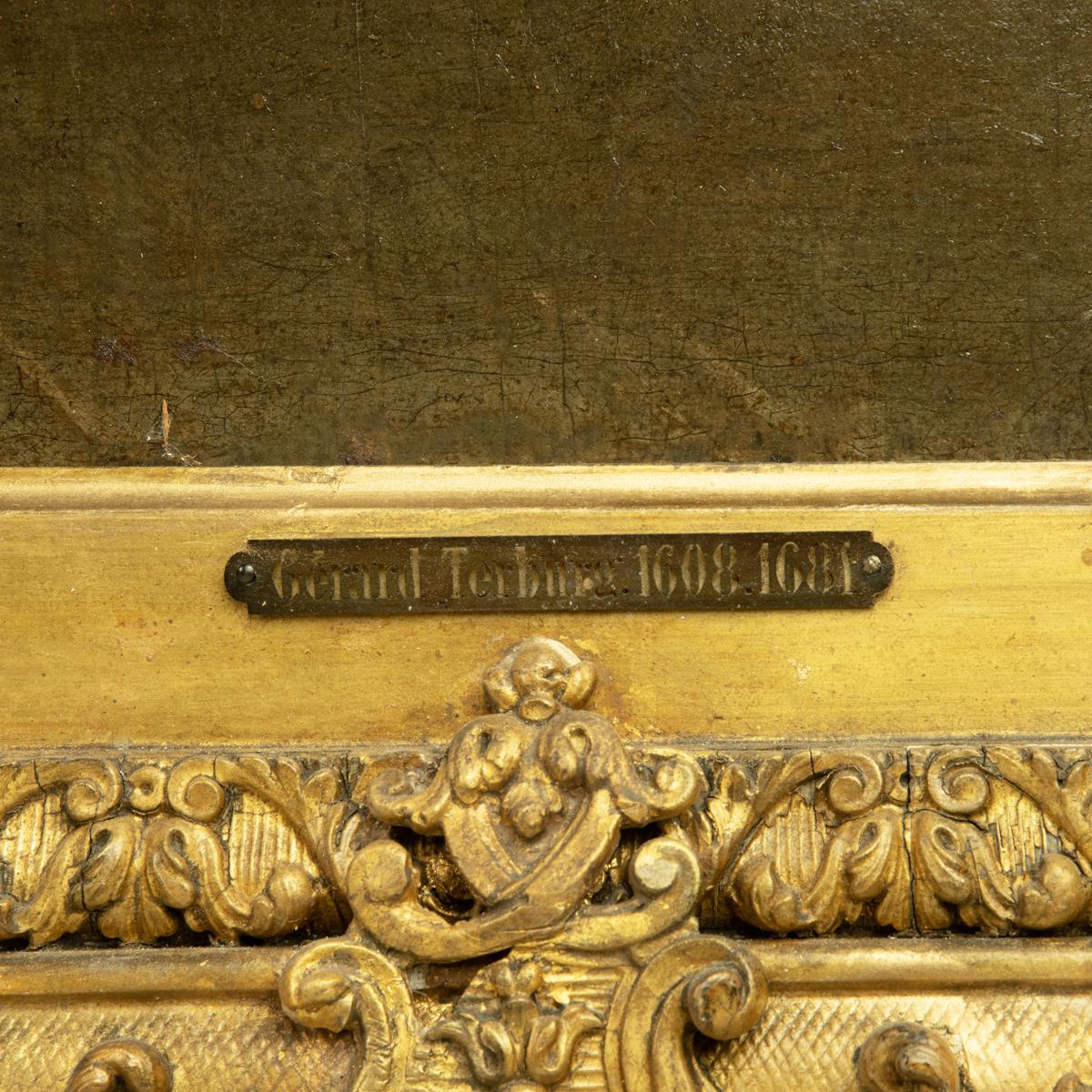
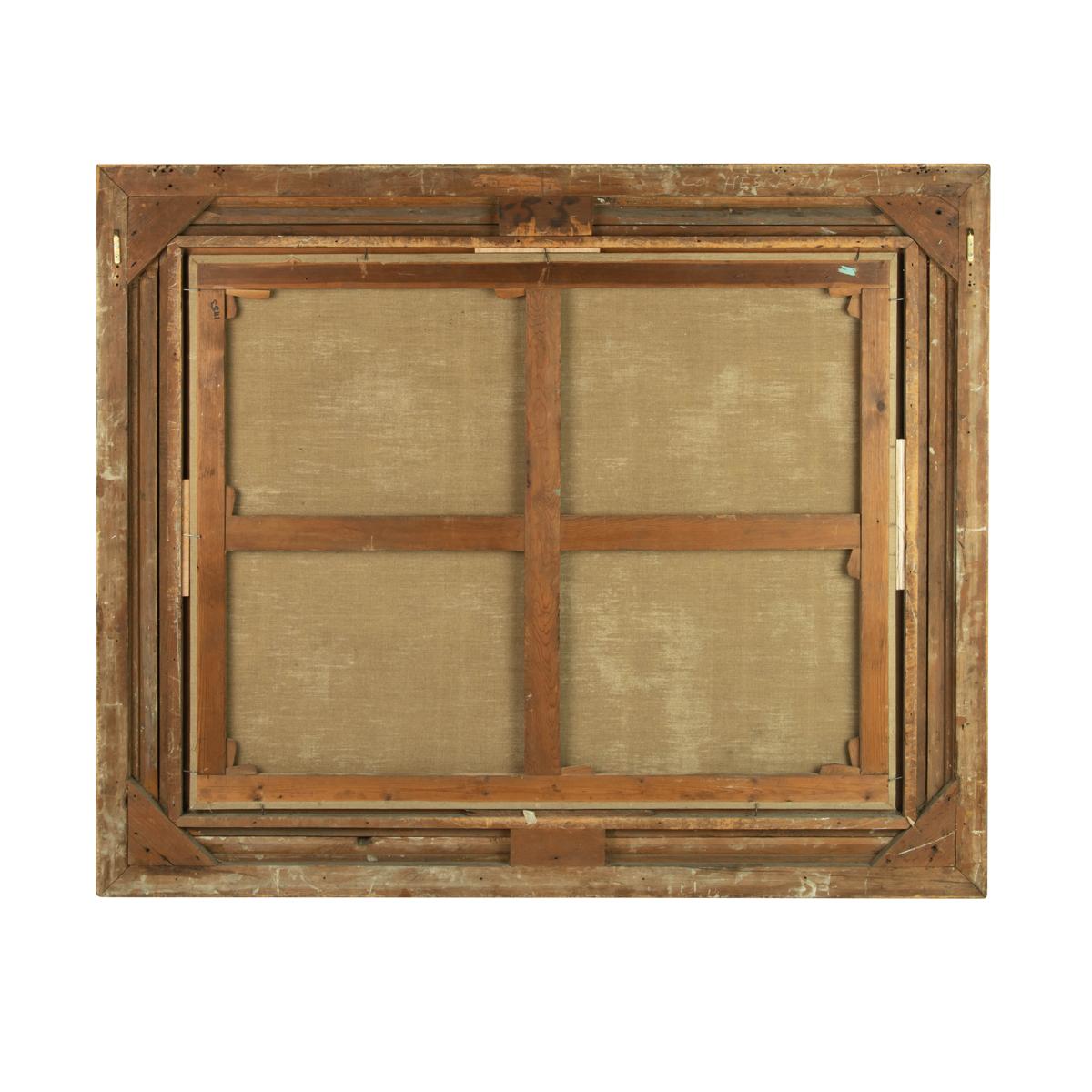
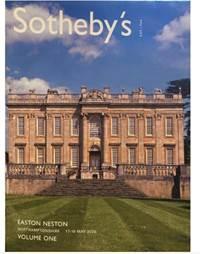
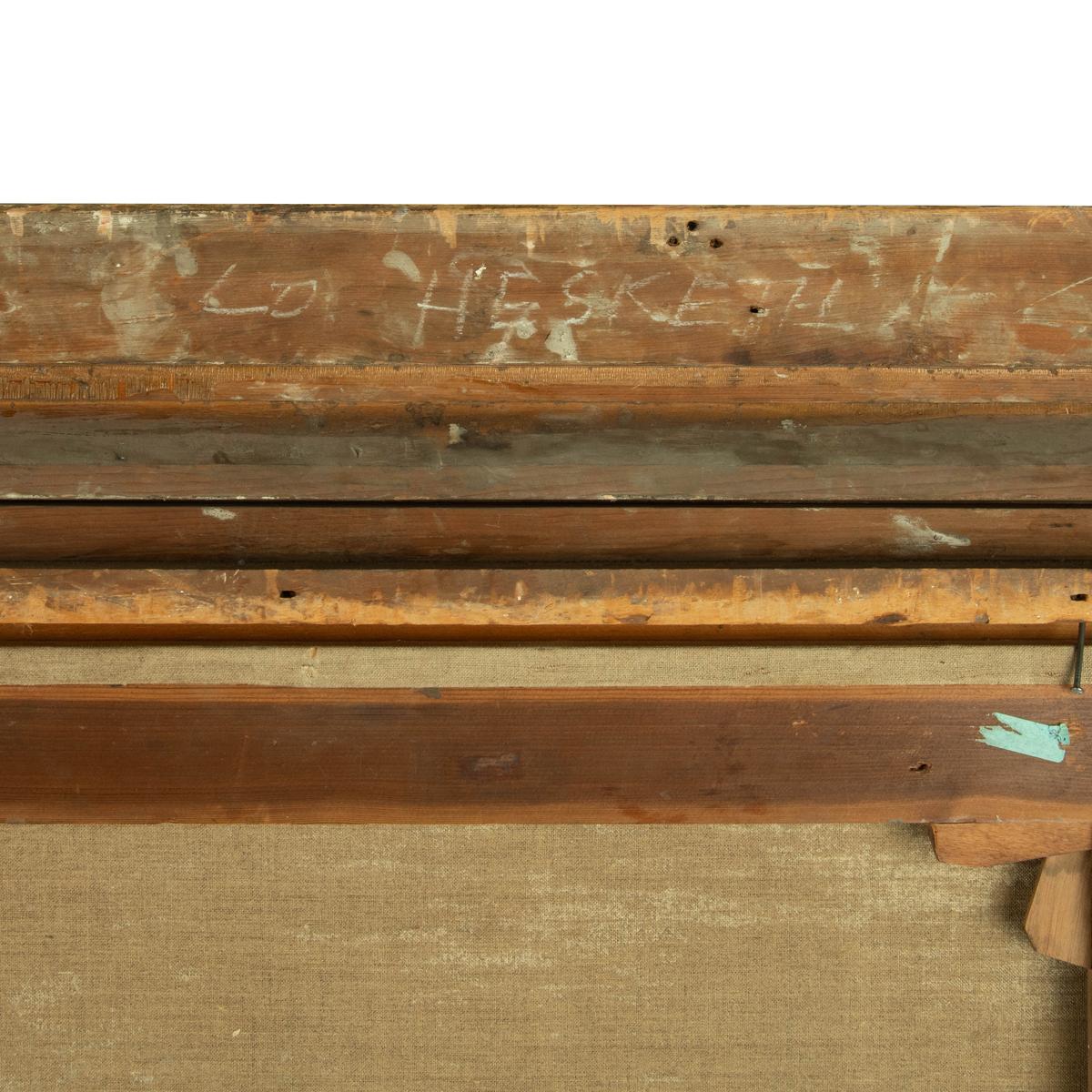
Price
£54500.00This object is eligible for a Certificate of BADA Provenance
The BADA Standard
- Since 1918, BADA has been the leading association for the antiques and fine art trade
- Members are elected for their knowledge, integrity and quality of stock
- Our clients are protected by BADA’s code of conduct
- Our dealers’ membership is reviewed and renewed annually
- Bada.org is a non-profit site: clients deal directly with members and they pay no hidden fees
An Elegant Musical Party in an Interior’ attributed to Gillis van Tilborgh, oil on canvas depicting a Dutch genre scene with figures dressed in rich silk clothing, fine lace ruffs and fichu collars grouped round musicians playing a clavichord, a fiddle and a flute, some couples holding hands or sitting close together and a baby playing on the floor, with a plaque reading ‘Gerard Terburg 1608-1681’, the reverse with a chalk notation ‘Ld Hesketh’. Dutch, circa 1870.
Provenance: George, 3rd Earl of Pomfret (1768-1830), or his brother The Hon. Thomas Fermor, later 4th Earl of Pomfret (1770-1833), Easton Neston.
Thence by descent, Lord Hesketh, Easton Neston.
His Sale, Sotheby’s London, 17-19 May 2005, lot 82. Private Collection.
Literature: George Baker, ‘The History and Antiquities of the County of Northamptonshire’ 1838, part IV, p.145, as ‘Flemish Musical Party, Palamedes’, and hanging in the Music Room; Philips & MacConnal, 1919, p.1, item 4, as ‘Given to Gerard Terburgh’ and hanging in the Picture Hall.
Historical Significance. ‘Genre scenes such as these merrymaking tavern interiors were invented during the seventeenth century in the Low Countries. The newly proclaimed Dutch Republic sought independence from their Spanish rulers, establishing their own trade routes around the world. The treasures, spices and goods brought back to Amsterdam made it the busiest port in Europe and made the Dutch Republic the wealthiest nation on Earth. This unprecedented influx of wealth resulted in an endless appetite for fine art. Famous artists such as Rembrandt, Rubens, Teniers & Frans Hals made their fortune in response to the market, and for the first time, paintings were made on speculation rather than by commission. Genre scenes such as the present painting belonged to this new category as they appealed to a great number of wealthy citizens. Imbued with a moral message of love and lust, the familiar setting of a tavern interior, with people dressed just like you, made them an incredibly exciting and vivid experience to behold. Dutch seventeenth century paintings are particularly celebrated for their realism, famously described as “the art of describing.” In fact, the tavern scene is depicted with such attention to detail that Van Tilborgh has included other ‘real’ paintings on the wall in the background, including a rendition of Peter Paul Rubens’ Angelica and the Hermit, which Van Tilborgh would have personally seen in Rubens’ home in Antwerp.
Gillis van Tilborgh, taught by the most famous Flemish painter of the 17th century, David Teniers, became a member of the important Saint Luke Painters’ Guild in Brussels in 1654, when he set up his own successful studio. Specialising in group portraits and genre scenes, Van Tilborgh’s use of colour is lively, with reds and blues reminiscent of Teniers. His success brought him to England around 1670, taking commissions from English aristocracy.
Easton Neston, the seat of the Hesketh-Fermor family for nearly 500 years, was home to an unrivalled collection of works of art, dating from as far back as the Tudor period.
Dimensions
Framed Height 53 ½ inches Width 64 inches Canvas Height 39 ¼ inches Width 50 inchesThe BADA Standard
- Since 1918, BADA has been the leading association for the antiques and fine art trade
- Members are elected for their knowledge, integrity and quality of stock
- Our clients are protected by BADA’s code of conduct
- Our dealers’ membership is reviewed and renewed annually
- Bada.org is a non-profit site: clients deal directly with members and they pay no hidden fees


